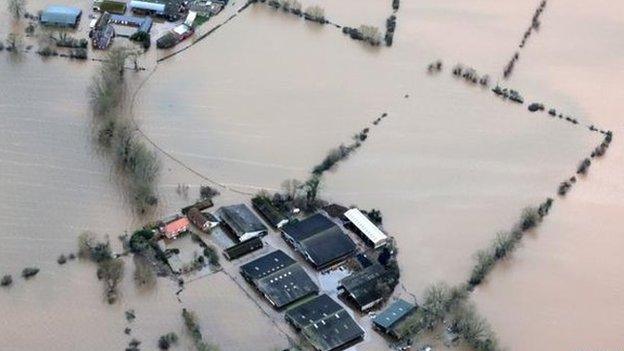How drugs are entering UK water systems through urine
- Published
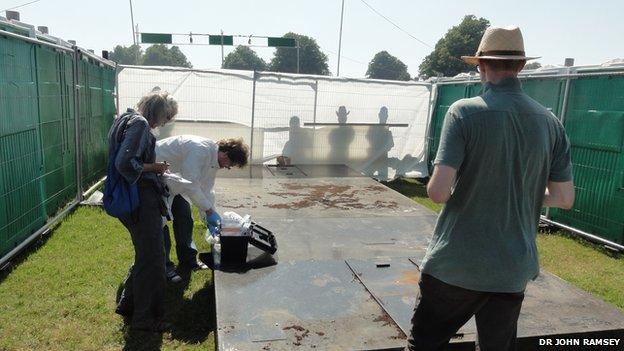
Samples were collected from backstage at the Latitude Festival urinals to analyse drug use
As drugs - both legal and illegal - pass through us, they enter the UK's waterways. But can this really lead to a change in the feeding habits, and even the sex, of wildlife?
Most people go to a music festival for the music, the mud and the social scene. But at this year's Latitude festival Dr John Ramsey and Dr Bram Mizeres have come for the urine.
Bottling up the goods from festival urinals might not sound like cutting edge science, but it can provide a glimpse into our pharmaceutical lives.
The drugs that end up in our urine also make their way out into our waterways, with some startling effects.
Last year over a billion prescriptions were dispensed in the UK, along with a huge number of over-the-counter remedies. More medication is being taken than ever before and with an ageing population this trend is not likely to slow down any time soon.
But what is the fate of these drugs as they travel beyond our toilets?
Intersex fish
At Brunel University, Prof Sumpter has been studying the effects of pharmaceuticals in our waterways ever since intersex fish - male fish exhibiting female traits such as egg production - were first spotted in UK rivers in the 1990s.
He and his colleagues wondered what was in the water that could be causing such radical change.
"At a biochemical, molecular level, a fish is extraordinarily similar to you and I," he explains.
"So almost every drug target in a human - receptors, enzymes, ion channels - is present in fish. And they do the same thing."
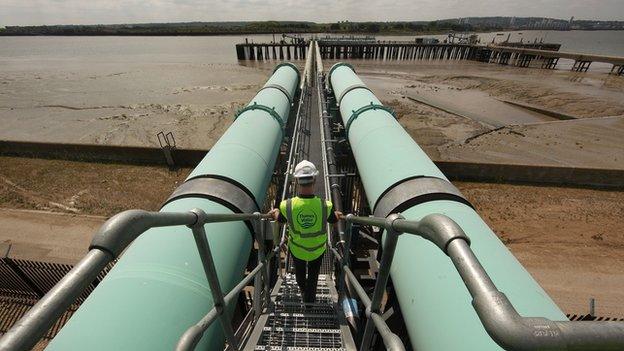
Britain's first mainland desalination plant, Thames Gateway Water Treatment Works, opened in 2010 to improve water quality
As studies into intersex fish developed, researchers soon amassed evidence that hormones from the contraceptive pill in the effluent from sewage treatment works were responsible.
Two decades on, our wastewater treatment has improved and most scientists suggest the majority of intersex fish can still breed without difficulty. But the contraceptive pill is not the only pharmaceutical making its way to our waterways.
Starlings on Prozac
Prof Sumpter now focuses on the effects of anti-depressants on fish.
Like synthetic sex hormones, anti-depressants dissolve in fat rather than water. As a result, they enter the bloodstream of organisms exposed to contaminated water.
This can affect other wildlife too, including birds. Dr Kathryn Arnold from the University of York has been studying the effect of Prozac on starlings, a number of which feed on the worms, maggots and flies found at sewage treatment works.
These creepy crawlies, living happily on the abundance of food found at the treatment works, contain high levels of pharmaceuticals, especially Prozac.
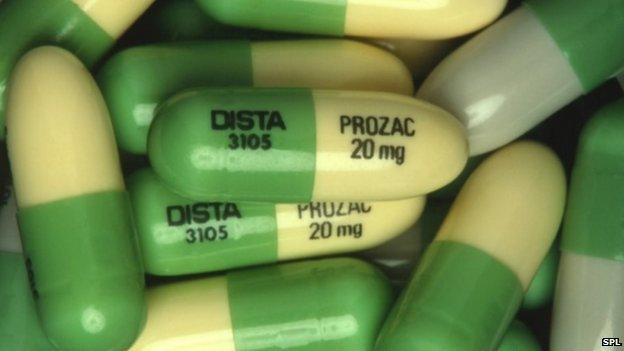
To study the effects this might be having on starlings, Dr Arnold and her team confined wild birds to aviaries and fed them on Prozac-laced worms, with the research to be published in October. They found that these birds ate less overall, snacking throughout the day instead of having full meals.
"And it's all these small, very subtle effects that build up and potentially compromise an animal in the wild," Dr Arnold says.
As yet, the science is at an early stage. Although the evidence seems to be mounting that laboratory-controlled, environmentally-relevant levels of micro-pollutants can have behavioural effects on fish and birds, only a small number of studies have tried to look at these changes in animals in the wild.
Dr Arnold and her team intend to start measuring the levels of Prozac in wild starlings' blood this winter.
"So we've done what many researchers in this area have done, we've kind of tried to do things in a controlled environment, in the lab," Dr Arnold explains.
"I guess the question that a lot of us are asking is, well, what does it mean for a normal healthy bird or fish in the wild to be consuming anti-depressants, or anti-psychotic drugs?"
Monitoring disease outbreaks
Such emerging evidence makes it all the more important that we know what is actually in the water.
Dr Barbara Kasprzyk-Hordern, an analytical chemist at the University of Bath, uses urine samples to provide near real-time data into levels of drug use.
"In the case of MDMA," explains Dr Kasprzyk-Hordern "there will be spikes during the weekend because it is a club drug. While, when we look at heroin, its use will be stable throughout the week because it's a very addictive drug."
Dr Kasprzyk-Hordern thinks this technique will also be able to monitor populations for outbreaks of disease.
"Usually when we test for certain diseases we use urine," she explains. "Why do we have to collect urine from every individual, why not look at wastewater?"
Just as an individual's urine can help assess their risk of developing certain forms of cancer, Dr Kasprzyk-Hordern hopes that by analysing a wastewater treatment plant it may be possible to identify areas with a greater incidence of cancer and target them with increased patient screening.
Changing drug design
For humans, however, the concentration of the drugs found in wastewater is not a cause for concern. You would need to drink 10 to 20 million litres of tap water to take on enough medication to fix a headache.
But things may be different for fish, which pass water over their gills continuously.
The question, therefore, is how to reduce the amount of these residues in our rivers and streams.
We can, of course, find better ways to treat the water - but that is both expensive and energy intensive.
Prof Ole Pahl from Glasgow Caledonian University wants us to take a more informed approach to drug design and usage, building a greater awareness of neighbourhood take-back schemes for the safe disposal of unused medicines.
"We should probably consider the actual day-to-day use around pharmaceuticals," he says. "Do we use them in the correct way, do we use too many of them, can we dispose of them in an environmentally friendlier way?"
Festival goers' urine
But at the moment we still need to understand what goes down the drains.

Compounds from both medication and illegal drugs were found from the samples taken at Latitude Festival urinals
Back at their base at St George's, University of London, Dr Ramsey reels off a list of the illicit drugs and everyday pharmaceuticals found in the festival goers' urine.
It's a mighty haul of 73 different compounds, ranging from everyday stimulants such as caffeine, to painkillers, antihistamines, anti-depressants and the active ingredient of the contraceptive pill. But they also found metabolites of MDMA (Ecstasy), cocaine and legal highs.
All this means that Dr Ramsey and Dr Mizeres are only just starting to decode the tales our urine tells about us.
Andrea Sella presents Urine Trouble: What's In Our Water on BBC Radio 4 - catch up on BBC iPlayer.
- Published29 April 2013

- Published1 September 2014
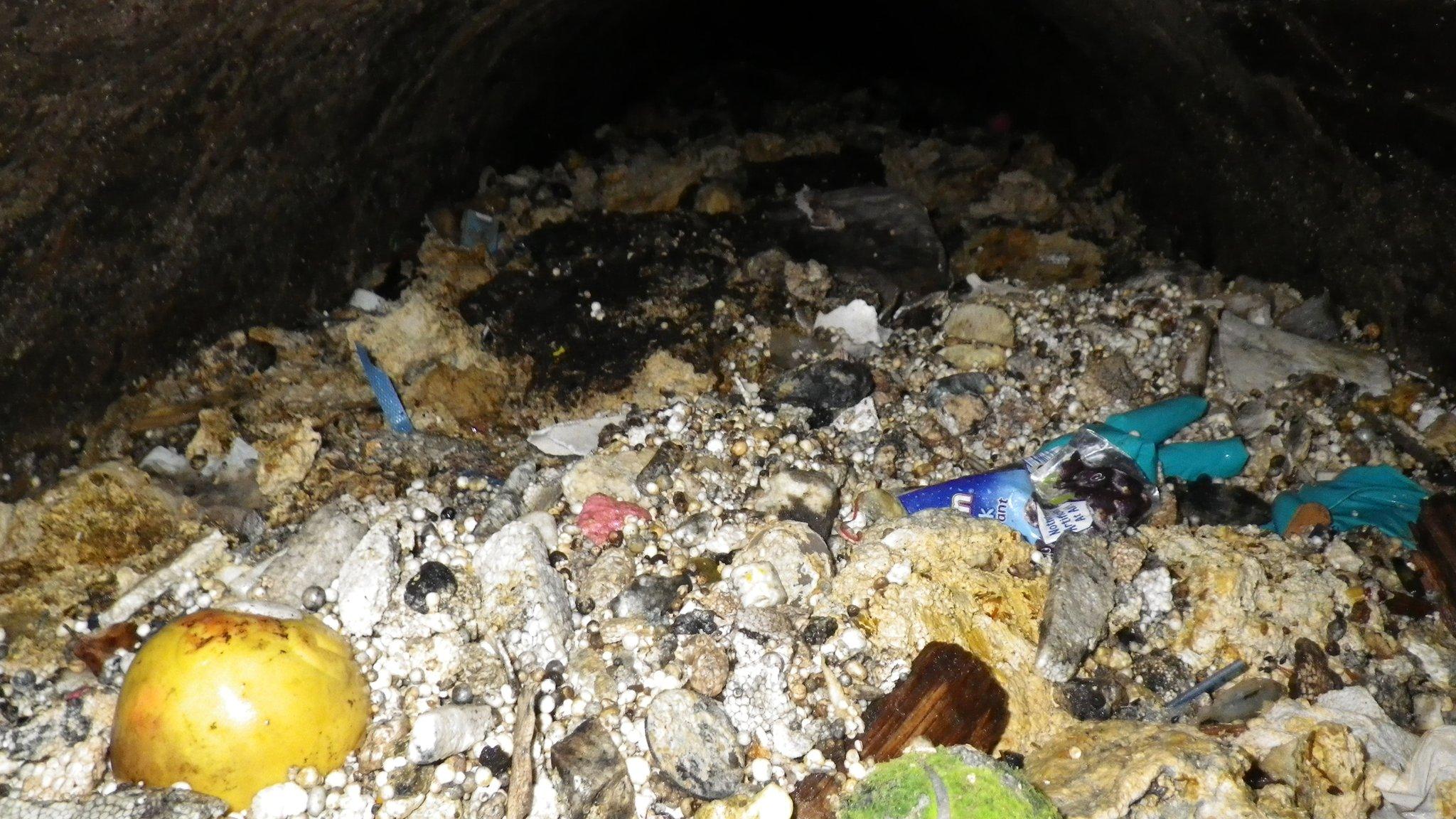
- Published24 March 2014
